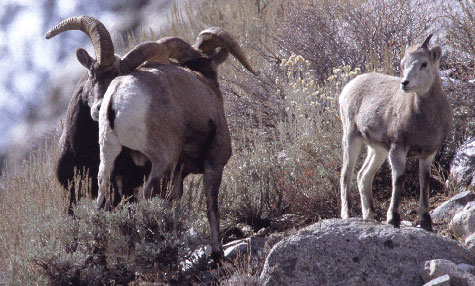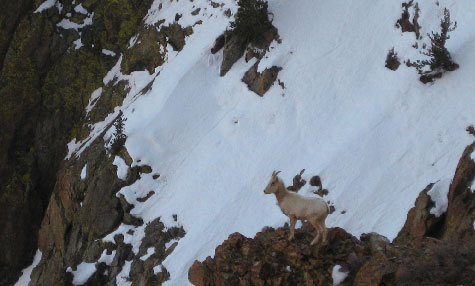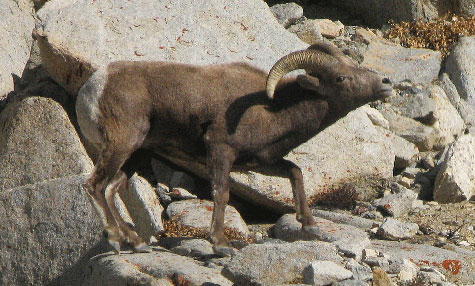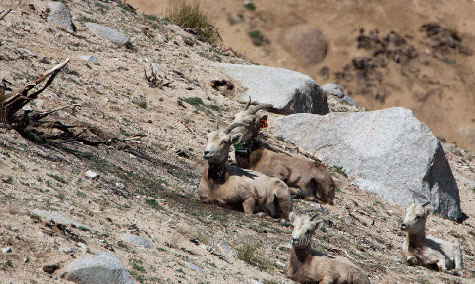Bighorn sheep harvest from their garden like the most discerning chef. They pick the tastiest and most nutritious plants and plant parts available that season. During a mid-summer stroll through the alpine, one can find bunches of blossoms of alpine gold (Hulsea algida) and sky pilot (Polemonium eximeum) growing between boulders. Bighorn munch on these beautiful alpine flowers leaving the leaves and roots for food in the fall.
Separate summer and winter gardens provide multiple harvests for bighorn that migrate to lower elevations for winter. In years with less snowfall, bighorn converge on low elevation winter range in February or March just as the lengthening winter days provide enough warmth and light for new plant growth to begin. In these snow-free areas, buckwheat and grasses provide small bites of nutritious new green growth, while bitterbrush and sagebrush can provide forage before growth begins.
Some bighorn remain high in the alpine throughout winter’s raging storms. These sheep find windswept ridges the most hospitable environment. Here strong winds sweep down the eastern escarpment scouring snow from ridge tops to expose frozen remnants of vegetation. At this time of year, bighorn can be seen digging into the frozen earth to eat the roots of grasses, the most nutritious plant parts remaining, while prickly phlox can be found on snow free slopes.

Rams "horn wrestling" part of dominance behavior with lamb watching
Sierra Nevada Bighorn Sheep: View the sheep's intricate mating habits in a segment from the Counting Sheep documentary, created by Green TV in 2004. Commentary by University of California White Mountain Research Station biologist John Wehausen. (2:19 min)  Entire film.
Entire film.

Ewe in late winter visiting lambing terrain

Ram mating behavior (typically October through December)

Ewe / lamb group browsing fresh sprouts in a recent burn (7 Oaks Fire / Mt. Baxter)